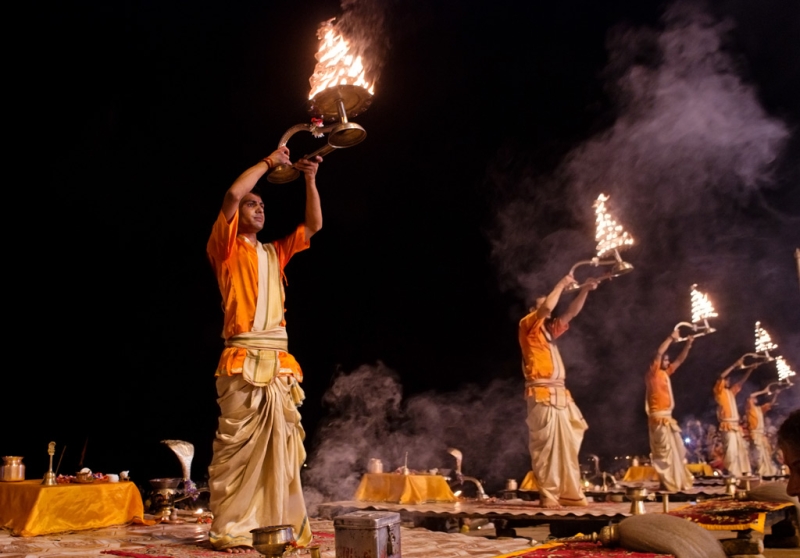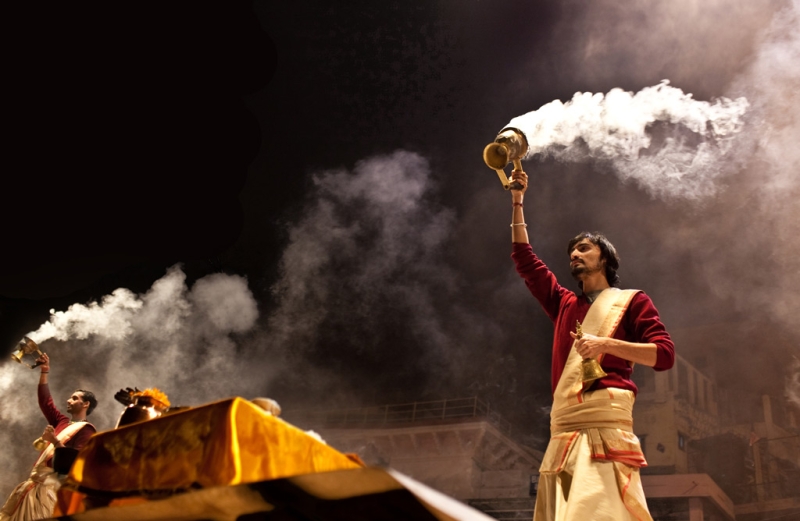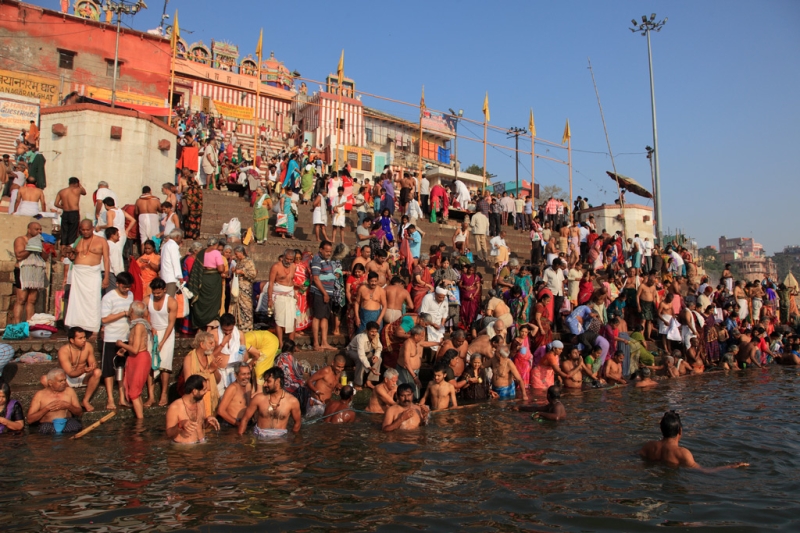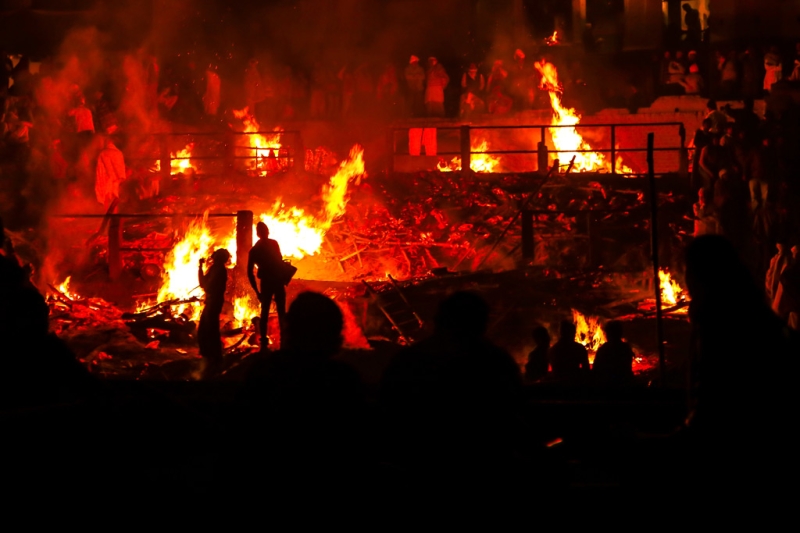
Until I visited Varanasi (India),
I had no idea that ghosts had unwashed ears, trembling fingers, and that a ghost could ask you for a coin.
Varanasi is the most important city in the Hindu religious tradition. According to legend, it was founded by the god Shiva several thousand years ago. Today Varanasi is one of the most important pilgrimage sites in the country. Some Hindus strive to get here to cleanse themselves of sins by plunging into the sacred waters of the Ganges River (that’s the Hindi name for the feminine river). Others – to leave the world of the living, complete the cycle of rebirth and remain forever in nirvana (in Hindi it is called “moksha”). For the soul of a Hindu to complete this route, his body must be burned on the banks of the Ganges.

Such surroundings make Varanasi an eerie place: it is quite appropriate to call this city an open-air crematorium. Which, moreover, works around the clock. And yet, Varanasi remains one of the most popular points of attraction for tourists from all over the world. Pilgrims praying in the rays of the rising sun on the river bank against the backdrop of thousand-year-old temples – this is impossible to miss. If you are traveling through northern India, be sure to try to stop by Varanasi for at least a couple of days. This city is worth changing your route for.

The first thing I did when I arrived in Varanasi was to go to the ghats. This is the name of the sites on the banks of the Ganges, which go down to the water with long stone steps. Already in the morning, the ghats are filled with people: from here, pilgrims who arrived in the city go down to the river to take a religious bath. Despite the fact that the water of the Ganga is very dirty and looks more like a thick dark slurry, for Hindus it is pure and sacred.
Then I headed to the nearest ghat where the dead are cremated. There are two of them in Varanasi: Harischandra and Manikarnika. However, I was not able to get very close.
Most tourists come to Varanasi for the sole purpose of photographing ritual bonfires. Varanasi is perhaps the most accessible place in the world where you can get an up-close look at this eerie ancient tradition. Curiosity is stronger than fear. At the same time, tourists sometimes do not realize that they have come to photograph someone else’s funeral.

At the entrance to the Harischandra ghat, a guard stopped me with a gesture. “But photos,” he said. — Hey respect. The guard led me to a nearby observation tower, where tourists could watch the cremation without disturbing anyone. An Indian old man, wrapped in cloth, sat on the entrance steps. He asked me for money. “Give him ten rupees,” the guard explained. — He collects wood for his fire.

Ritual bonfires for cremations are made from natural firewood, which is very expensive in India. For example, if you want you or your relative to be cremated in a regular government crematorium, it will cost about 500 rupees. A fire made from natural wood on the banks of the Ganges costs five thousand. The journey to nirvana is an expensive pleasure. The poor people who want to go there collect money for a long time, forgetting about earthly matters. These hassles can take a long time, sometimes for several months. All this time they live like ghosts who are temporarily stuck between our world and the other world.
I gave the old man a hundred rupees and began to climb the tower.
See also:
Kerala – a paradise in a tropical forest
Secret Jaipur: Hindu hermits and a mountain with an army of monkeys

